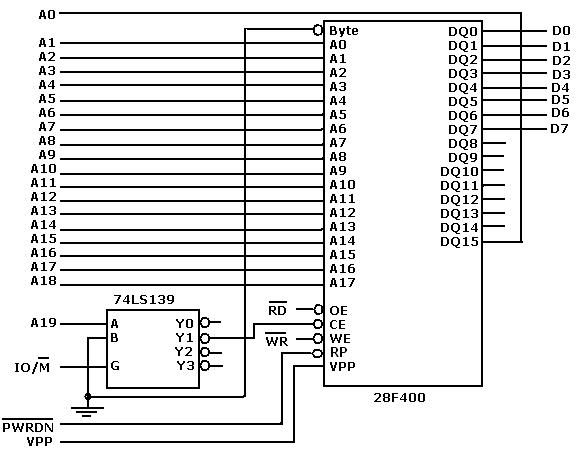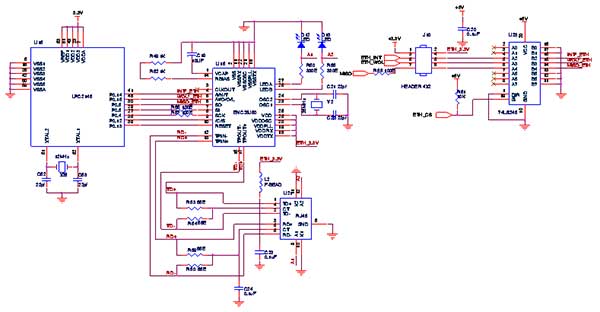Spi Serial Flash Programmer Schematic Drawing
M25P128 Serial Flash Embedded Memory with 54 MHz SPI Bus Interface Features. SPI bus-compatible serial interface. 128Mb Flash memory. 54 MHz clock frequency (maximum). 2.7V to 3.6V single supply voltage. VPP = 9V for fast program/erase mode (optional). Page program (up to 256 bytes) in – 0.5ms (TYP) – 0.4ms (TYP with VPP = 9V).
Description Application: Serial memory programming in:. car electronics & automotive (reprogramming modules, radio-code, immobilizers, gps navigations, mileage correction and other modules with serial EEPROM and/or FLASH memories),. computer and notebook service (data recovery, reflashing, upgrading and programming BIOS chips in motherboards, copier & fax machines, printers, hdd & ssd sata drives etc. ),. network service (programming and cloning optical and ethernet SFP & SFP+ modules),. RTV/AGD maintaining or repairing (TV, digital cameras, tv tuners etc.),. and many other devices equipped with serial IIC / SPI / Microwire EEPROM and SPI FLASH chips.
Main features:. FRAM I2C 24 series 24.04 24.16 24.64 24.01 24.02 24.05 24.10 FM24C04, FM24CL04, FM24C16, FM24CL16, FM24C32, FM24C64, FM24V01, FM24W256, FM24V02, FM24V05, FM24V10 FRAM SPI 25 series 25.04 25.16 25.64 25.01 25.02 25.05 25.10 25.20 FM25040, FM25L04, FM25C160, FM25L16, FM25CL64, FM25640, FM25V01, FM25V02, FM25W256, FM25V05, FM25V10, FM25H20, FM25V20 SFP / SFP+ optical & ethernet modules Please note that there is SFP adapter required with external power supply! SFP / SFP+ (MSA standard: 0xA0, 0xA2) SFP and SFP+, read/write block 0xA0 (256B), read block 0xA2 (256B), standard MSA Supports not secured chips - example manufacturers: GBC, HUAWEI, GPON, JDSU, MIKROTIK, OPTEC, OPTION, WTD and other OEM Possibility to change manufacturers info, model, serial number etc. And recalculate checksum directly from REVELPROG-IS application. I just want to say how much I love my Revelprog-IS, and the phenomenal service Artur provides!
I've only had need to contact support with a couple of questions about specific flash ROMs and every time, Artur responds almost instantly! With the latest problem, today, the chip appeared to be reading okay but the program displayed all high-valued (FF). Artur provided an advance release of the program's version 1.6 (alpha) to see if it would verify the problem as a communication error. The new program verified that it was indeed due to a communication error (no doubt caused by a poor connection). I soldered the chip to an adapter board and read it instantly, without error. Thanks so much, Artur, for such a terrific product and outstanding service!
Sincerely, Larry Sabo, Sabo Computer Repairs & Data Recovery. REVELTRONICS ISP cable is in set with REVELPROG-IS (not with Pomona Clip). Could you tell me you order number on email (you can use also contact form) so I can check details? If you ordered programmer and you have not received the ISP tape than we are so sorry for this mistake and we will send you second package with tape. Please contact us on email. Autodetection is possible only for SPI protocol, but there is no autodetection currently because programmer supports also low voltage flash spi chips and with autodetection there is risk for damaging the chip.
There are implemented smart procedures for FLASH SPI so you do not need to know exactly flash symbol - only capacity is needed e.g. It is enough to select FLASH - 25 series - 25.64PP for 64Mbit flash (e.g. For W25Q64BV) or FLASH - 25 series - 25.128PP for 128Mbit flash (e.g. W25Q128FV) etc. We will think how to improve it - maybe autodetection with required voltage selection. Thank you for your opinion.
DLP-USB1232H based SPI programmer schematics In order to use the DLP-USB1232H device as SPI programmer you have to setup a small circuit (e.g. On a breadboard). See the schematics for details (you can also for easier printing). What you will need: Quantity Device Footprint Value Comments 1 — —. 1 Breadboard — —. Many Jumper wires — —.
1 DIP-8 SPI chip — — This is the chip you want to program/read/erase. 1 3.3V voltage regulator TO-220 3.3V E.g.
LD33V or LD1117xx. 1 Electrolytic capacitor single ended 100nF.
1 Electrolytic capacitor single ended 10uF. Instructions and hints:. You must connect/shorten pins 8 and 9, which configures the device to be powered by USB. Without this connection it will not be powered, and thus not be detected by your OS (e.g.
It will not appear in the lsusb output). You need a 3.3V voltage regulator to convert the 5V from USB to 3.3V, so you can power the 3.3V SPI BIOS chip. You can probably use pretty much any 3.3V voltage regulator, e.g. LD33V or LD1117xx. For usage on a breadboard the TO-220 packaging is probably most useful. You have to connect two capacitors (e.g. 100nF and 10uF as per datasheets, but using two 10uF capacitors, or even two 47uF capacitors also works in practice) as shown in the schematics, otherwise the voltage regulator will not work correctly and reliably.

Connect the following pins from the DLP-USB1232H to the SPI BIOS chip:. 18 (SK) to SCLK. 16 (DO) to SI. 2 (DI) to SO. 5 (CS) to CS#.
The WP# and HOLD# pins should be tied to VCC! If you leave them unconnected you'll likely experience strange issues.
All GND pins should be connected together ( pins 1 and 10 on the DLP-USB1232H, pin 8 on the SPI chip, pin 1 on the voltage regulator). You have to invoke flashrom with the following parameters: $ flashrom -p ft2232spi:type=2232H,port=A On older flashrom versions the syntax was: $ flashrom -p ft2232spi:ft2232type=2232:port=A Photos:. Module and parts FTDI FT2232H Mini-Module The can be used with flashrom for programming SPI chips. Where to buy: FTDI FT4232H Mini-Module The can be used with flashrom for programming SPI chips.
Where to buy: openbiosprog-spi is an Open Hardware USB-based programmer for SPI chips, designed. It uses an FTDI FT2232H chip and features either a DIP-8 socket or a pinheader where jumper-wires can be attached. The user-space source code is part of flashrom, the schematics and PCB layouts are licensed under the license and were created using the open-source EDA suite (GPL, version 2).
For more information and downloads, including a parts list, Gerber file downloads, recommended Kicad settings, and recommended PCB manufacturer settings, see. Usage: $ flashrom -p ft2232spi:type=2232H,port=A Photos:. RushSPI v0.1 Amontec JTAGkey/JTAGkey2/JTAGkey-Tiny The can be used with flashrom for programming SPI chips. And should work, if you add them to ft2232spi.c ( untested). Where to buy: Usage: More info can be found on on. You need a 3.3V voltage source - see above for details.
Connect the following pins from the JTAGkey2 to the SPI BIOS chip:. 1 (Vref) to VCC.

5 (MOSI/TDI) to SI. 7 (CS#/TMS) to CS#.
9 (CLK/TCK) to SCLK. 13 (MISO/TDO) to SO. 20 (GND) to GND. The WP# and HOLD# pins should be tied to VCC. The 'Cable pinout' picture below shows the colors on the breakout cable.
Amontec JTAGkey-tiny Olimex ARM-USB-TINY/-H and ARM-USB-OCD/-H The (VID:PID 15BA:0004) and (15BA:0003) can be used with flashrom for programming SPI chips. The (15BA:002A) and (15BA:002B) should also work, though they are currently untested. The following setup can then be used to flash a BIOS chip through SPI.
Pin (JTAG Name) SPI/Voltage Source 1 (VREF) VCC (from Voltage Source) 2 (VTARGET) VCC (to SPI target) 4 (GND) GND (from Voltage Source) 5 (TDI) SI 6 (GND) GND (to SPI target) 7 (TMS) CE# 9 (TCK) SCK 13 (TDO) SO On the ARM-USB-TINY, VREF, and VTARGET are internally connected, and all the GND lines (even numbered pins, from 4 to 20) share the same line as well, so they can be used to split VCC/GND between the voltage source and the target. The voltage source should provide 3.0V to 3.3V DC but doesn't have to come from USB: it can be as simple as two AA or AAA batteries placed in serial (2 x 1.5V). Invoking flashrom: You first need to add the -p ft2232spi option, and then specify one of arm-usb-tiny, arm-usb-tiny-h, arm-usb-ocd or arm-usb-ocd-f for the type. For instance, to use an ARM-USB-TINY, you would use: $ flashrom -p ft2232spi:type=arm-usb-tiny Openmoko The openmoko debug board(which can also do serial+jtag for the openmoko phones, or for other phones) has Informations The openmoko debug board can act as an SPI programmer bitbanging the FTDI(no need of an openmoko phone), you just need:. a breadboard. some wires.
The openmoko debug board(v2 and after,but only tested with v3) The voltage is provided by the board itself. The connector to use is the JTAG one(very similar to what's documented in the previous section(Olimex ARM-USB-TINY/-H and ARM-USB-OCD/-H ) Building WARNING this was tested with 3.3v chips only. Here's the pinout of the JTAG connector of the openmoko debug board(copied from ARM-USB-tiny because it's the same pinout): Pin (JTAG Name) SPI/Voltage Source BIOS Chip connector name 1 (VREF) VCC (from Voltage Source) VCC (3.3v only) 2 (VTARGET) VCC (to SPI target) Not connected 4 (GND) GND (from Voltage Source) Ground 5 (TDI) SI DIO (Data Input) 6 (GND) GND (to SPI target) Not connected 7 (TMS) CE# CS (Chip select) 9 (TCK) SCK CLK (Clock) 13 (TDO) SO DO (Data output). Also connect the BIOS chip's write protect(WP) to VCC. Also connect the BIOS chips's HOLD to VCC Pictures.
Pictures. Performances # time./flashrom/flashrom -p ft2232spi:type=openmoko -r coreboot.rom flashrom v0.9.5.2-r1545 on Linux 3.0.0-20-generic (x8664) flashrom is free software, get the source code at Calibrating delay loop. Found Winbond flash chip 'W25X80' (1024 kB, SPI) on ft2232spi.
Spi Serial Flash Programmer Schematic Drawings
Reading flash. Real0m19.459s user0m1.244s sys0m0.000s # time./flashrom/flashrom -p ft2232spi:type=openmoko -w coreboot.rom flashrom v0.9.5.2-r1545 on Linux 3.0.0-20-generic (x8664) flashrom is free software, get the source code at Calibrating delay loop. Found Winbond flash chip 'W25X80' (1024 kB, SPI) on ft2232spi. Reading old flash chip contents. Erasing and writing flash chip.
Erase/write done. Verifying flash. Real1m1.366s user0m7.692s sys0m0.044s Advantages/disadvantages. fast(see above). easily available(many people in the free software world have openmoko debug board and they don't know what to do with them), can still be bought.
Usb Spi Flash Programmer
stable. SPI only.